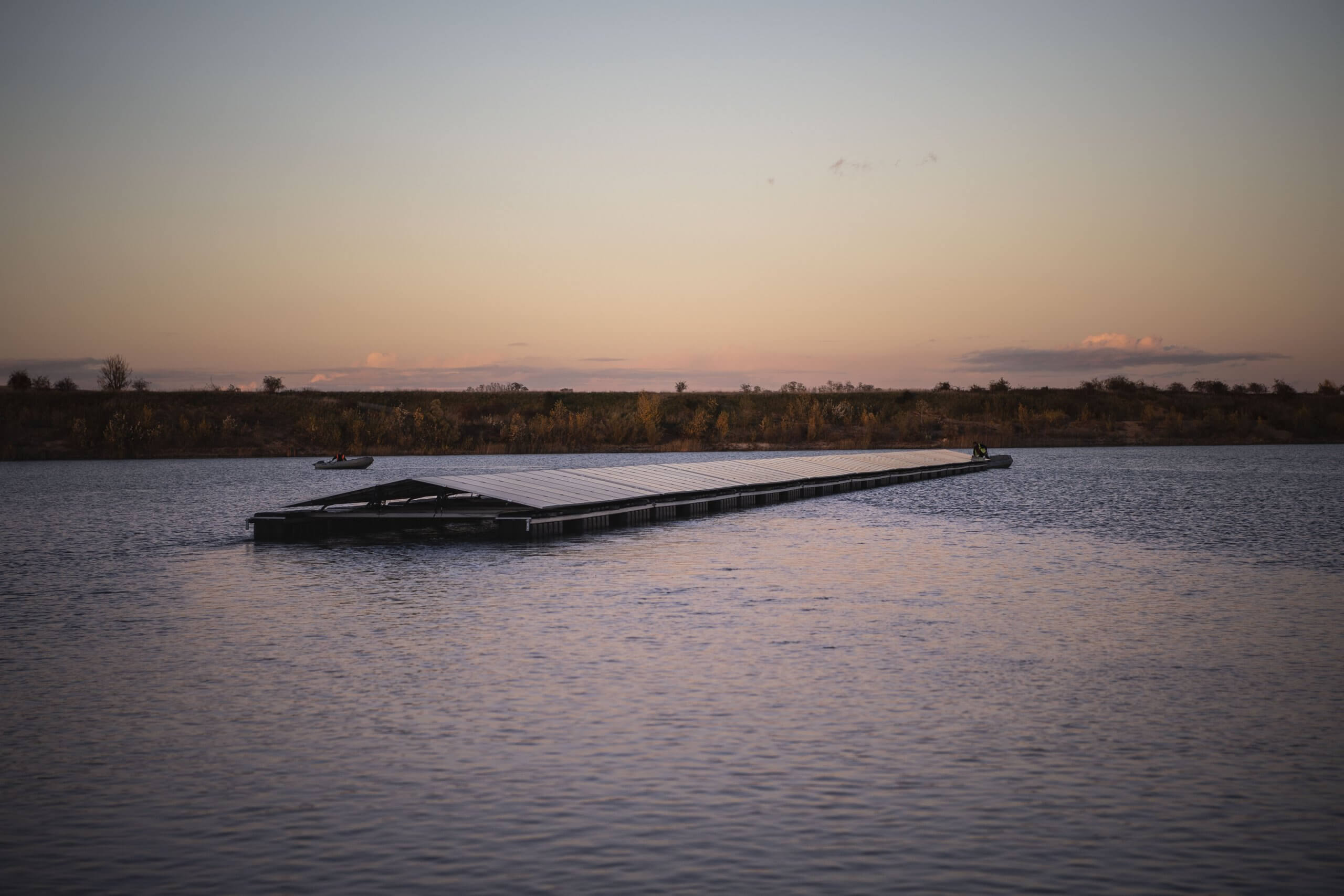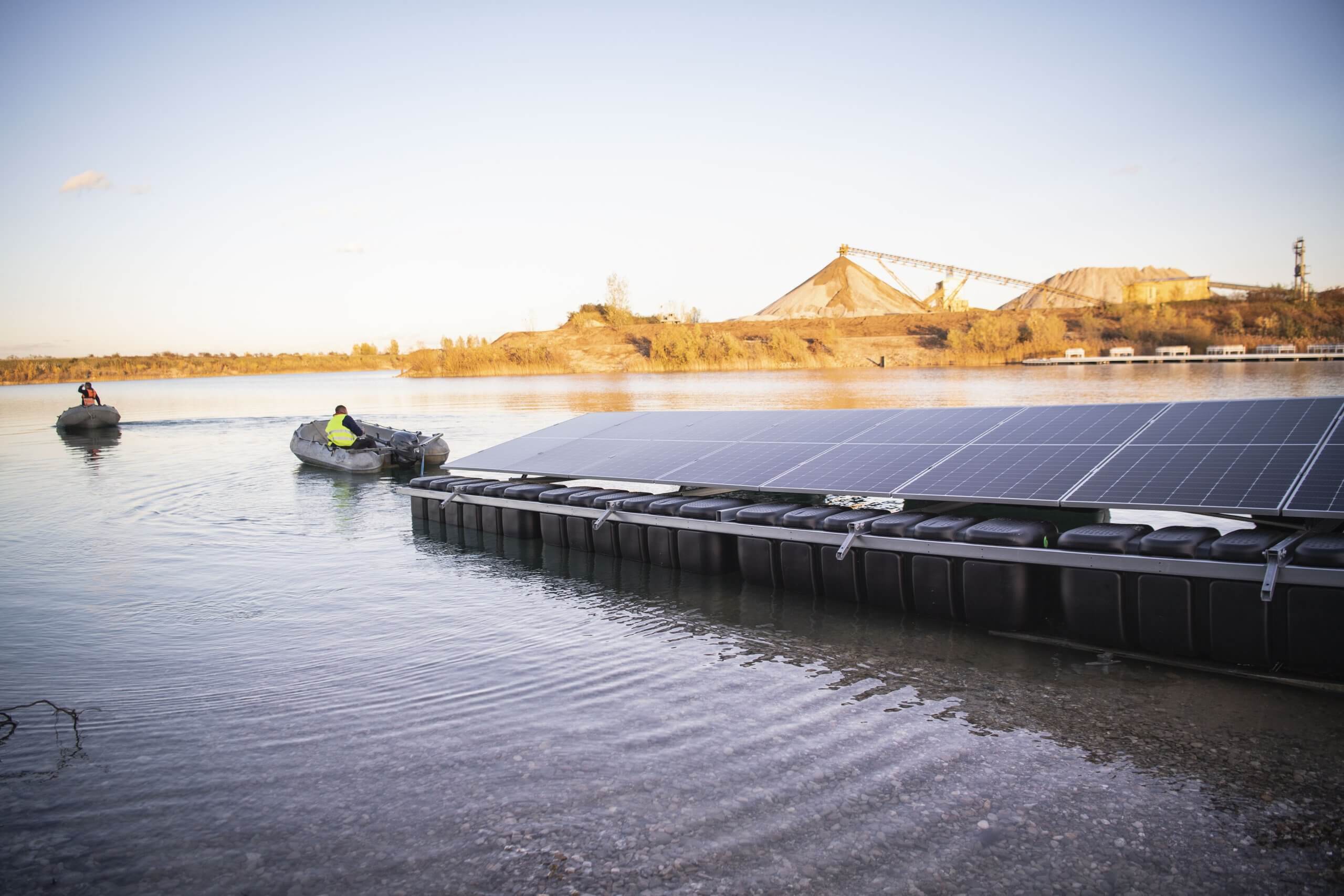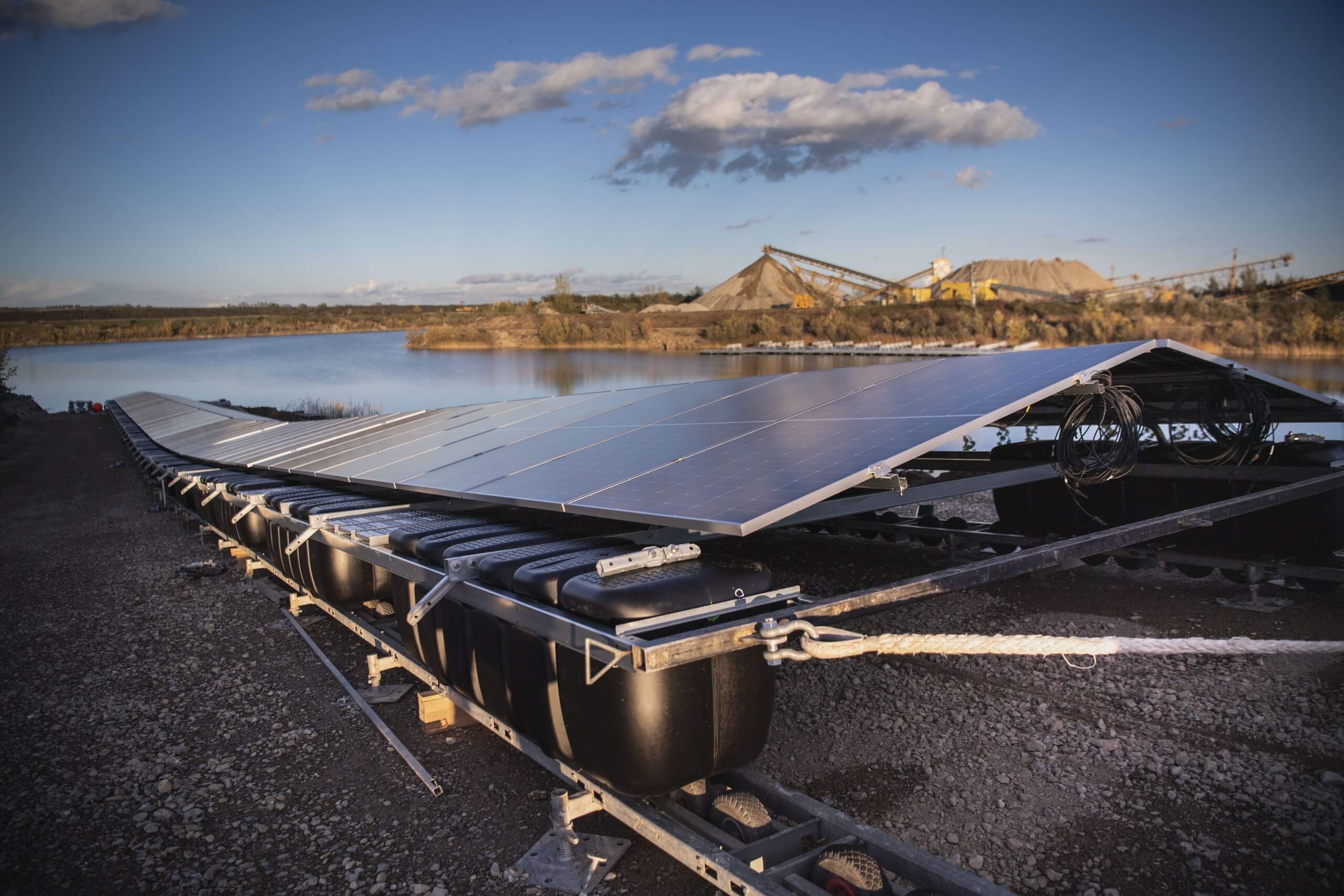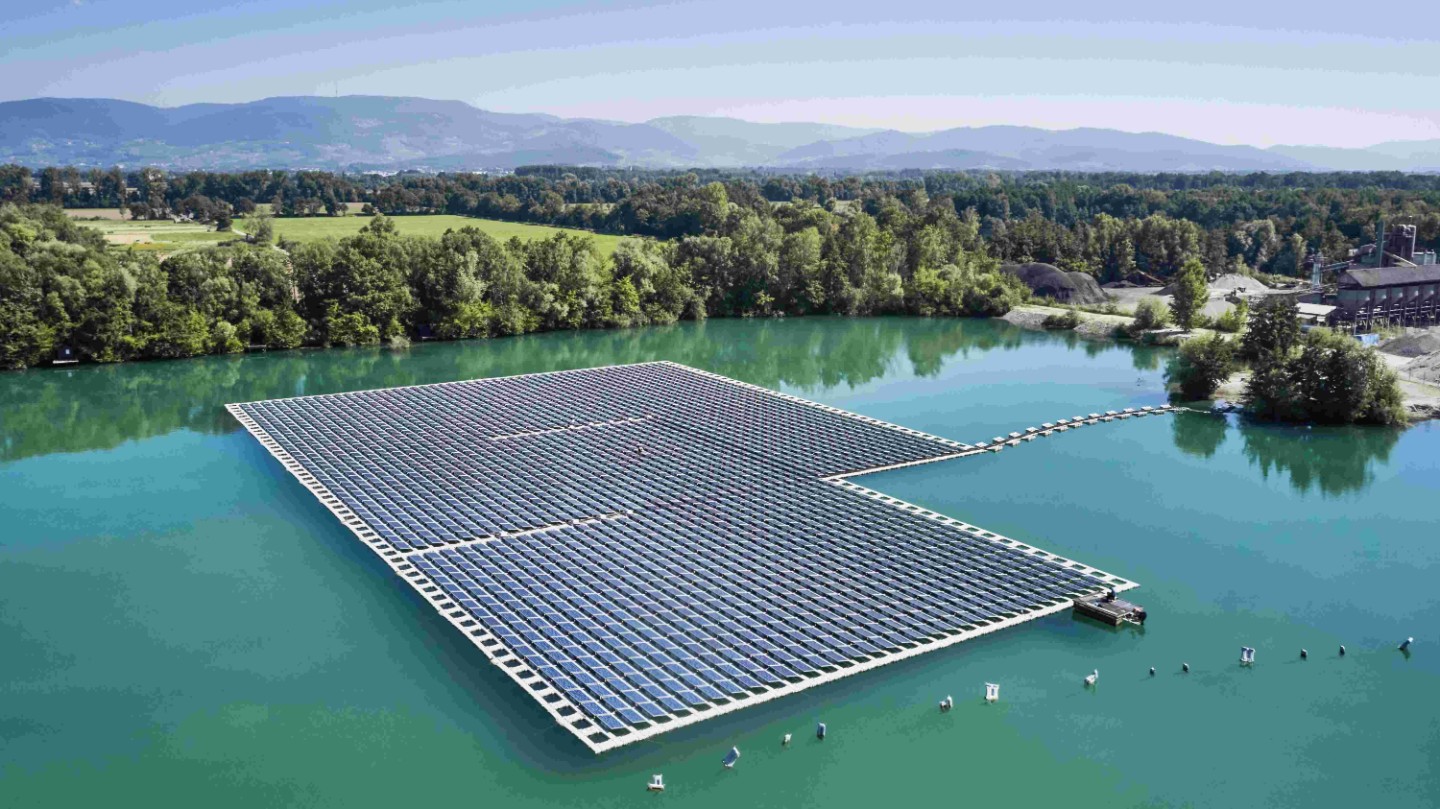
ECOwind and EVN are building a floating PV system in Grafenwörth, i.e. a photovoltaic system that floats on water – the largest of its kind in Central Europe. It is being built on a water surface of around 14 hectares, has an output of 24.5 MWp and will be able to supply around 7,500 households with green electricity in the future.
Photovoltaic systems on roofs and open spaces are now a familiar sight. A floating system, on the other hand, is a rarity. Exactly one of these is now being built in Grafenwörth. The floating PV with an output of 24.5 MWp (megawatt peak) will in future supply around 7,500 households with green electricity, announced EVN and the company Ecowind from Kilb (district of Melk) in a broadcast.
With this extraordinary system, “formerly unused water areas are used in a new way,” says Ecowind Managing Director Johann Janker.
Limited available space
“Against the background of only limited available space, such systems are a very valuable addition to the classic solar installation on the roof or in the open space,” says Janker.
The new system makes “an important contribution to achieving our PV expansion goals and thus also to climate protection,” says EVN CEO Stefan Szyszkowitz. As part of the climate initiative, the energy supplier wants to reduce its emissions of greenhouse gases by around 60 percent by 2034.

“We are very pleased to be able to implement this project together with our partner EVN. With the still new solar application Floating-PV, fallow areas of water can be put to a new, sensible use. Against the background of only limited available space, such systems are a very valuable addition to the classic solar installation on the roof or in the open area,” reports ECOwind Managing Director Johann Janker.

Governor Johanna Mikl-Leitner got an idea of the PV system on site and was delighted: “In terms of climate protection, we want to take big steps forward. The system will help to get a step closer to our goals in the fight against climate change”.
The floating PV system will go into operation in spring 2023.
Floating PV – an innovative approach to defuse the land use conflict
From disused lignite and sand pits to reservoirs, floating photovoltaic systems – floating PV systems – on unused water surfaces can make an important contribution to the energy transition in Germany and the heated debate about land use for residential and agricultural areas, as well as for the expansion of renewable energies take the wind out of your sails.
Great potential for the energy transition in Germany
With a 10% coverage of the artificial lakes suitable for floating PV and taking into account all exclusion criteria (nature and landscape protection, recreation/leisure activities, etc.), the potential for floating PV in Germany is over 2 GWp. 725,000 average German households could be supplied with country-neutral electricity. The solar power generated would save more than a million tons of CO2 per year. In addition, Fraunhofer ISE estimates the floating PV potential alone on lignite opencast lakes in Germany at 1.6-5.5 GW.
In Germany, flooded opencast mining areas, gravel lakes and, in some cases, reservoirs come into consideration. The first FPV system in Germany has been connected to the grid since the end of May 2019 with an output of almost 750 kWp, on a quarry pond near Renchen/Baden. Most of the electricity is consumed directly by the adjacent gravel works. In addition to the application of FPV on seas, the technology can also be used on the sea (offshore or near the coast). Further possible applications are the integration of FPV on cover films of agricultural water reservoirs or fish farms. In Cyprus, for example, a floating solar film was installed on a water reservoir. It reduces water evaporation and pollution while at the same time producing electricity for the pumping stations. An implementation of PV via channels is also possible.

Source: ECOWind, 27. Oktober 2022
https://www.baywa-re.de/de/solar/systemanwendungen/floating-pv/#vorteile-floating-pv
